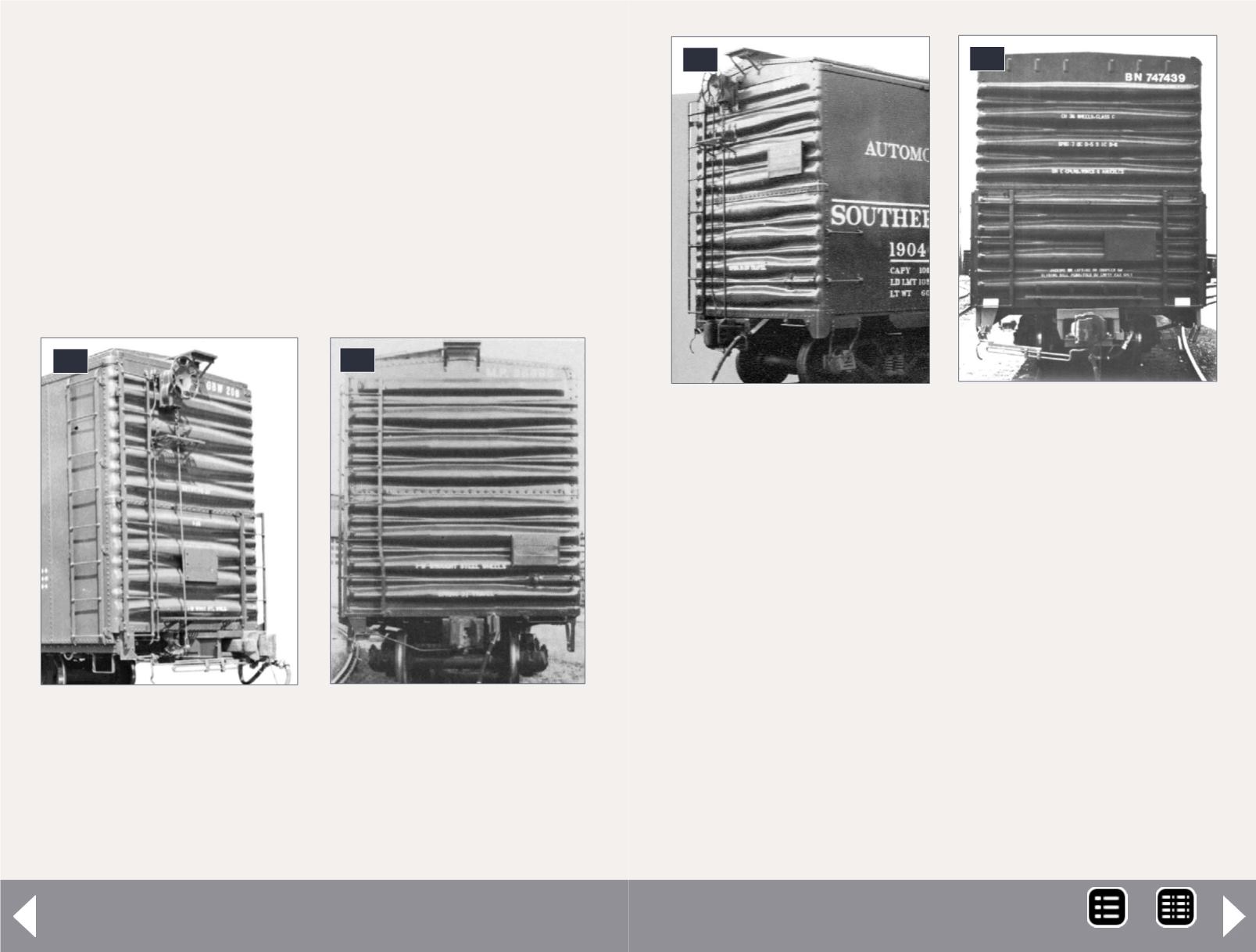
34. Dreadnaught 4/4
end with round corners
for W-section corner
post. Car built by
Greenville in 1963.
34
35. Improved
Dreadnaught 4/4 end
with smooth tapered
corrugations. Note
truncated rectangular
top rib.
35
the larger rib was usually smoothly tapered [35], on some
Improved Dreadnaught ends the main ribs took on the appear-
ance of a rolling pin [36]. Improved Dreadnaught ends were
made with both truncated [35] and full width top ribs [37].
Dartnaught or dart-less ends
Stamped steel car ends with large ribs, but without the second-
ary ribs or darts, were introduced in the late 1930s [39], how-
ever, they did not come into common usage until after WWII.
Although the railroad industry had no generic name for the
design, John Nehrich coined the name dartnot, or dartnaught,
Boxcar ends - 11
because they looked like a standard Dreadnaught end without
the usual small side darts. American Car & Foundry increased
the rigidity of the dart-less end by adding dimples at the cor-
ners between each large rib [42]. Note that the four ribs in the
lower panel are larger than those in the upper panel and, in
accordance with A.R.A. recommended practice, are stamped
from heavier-gauge steel.
The original Dreadnaught concept of a series of large tapered
ribs continued to evolve as car builders developed their own
36. Improved
Dreadnaught 4/4 end
with main ribs shaped
like rolling-pins. Note
truncated top rib on this
car built in 1953.
36
37. Improved
Dreadnaught end on
car built by Pacific Car
& Foundry. Note non-
tapered top rib and six
small vertical indentations
in the hat section.
37
MRH-Oct 2014


